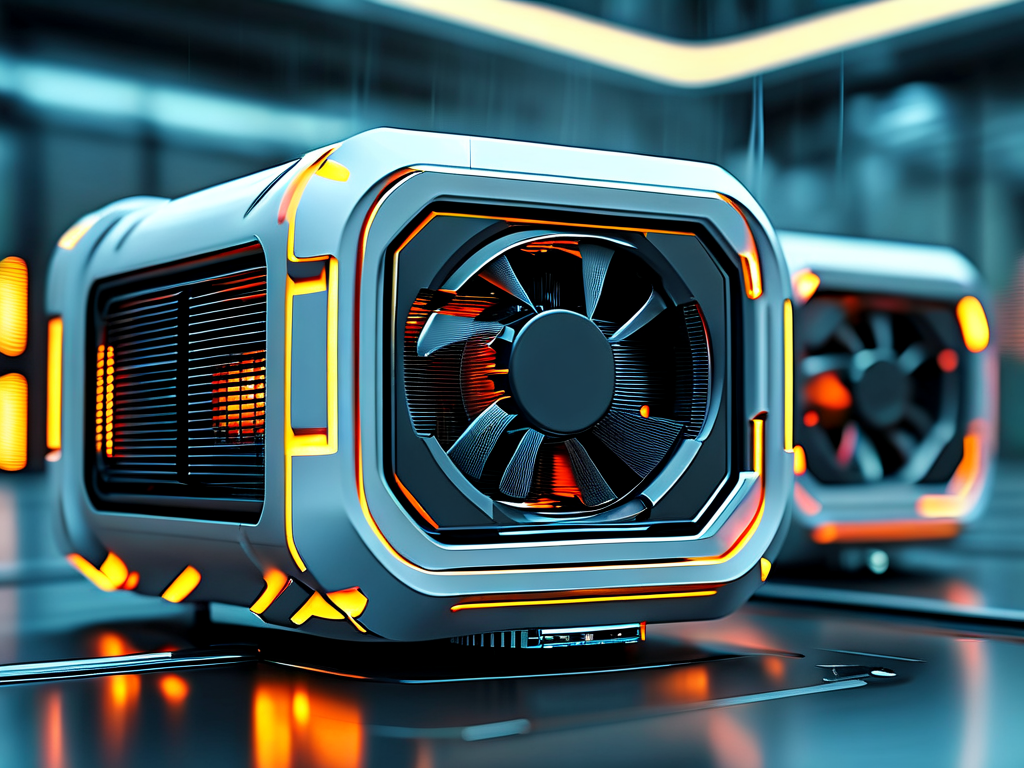As robotics permeate industries from manufacturing to healthcare, thermal management has emerged as a critical bottleneck. Traditional cooling methods, such as passive heatsinks or basic fan systems, struggle to meet the demands of high-performance robots operating in dynamic environments. However, recent advancements in materials science and adaptive cooling architectures are rewriting the rules of robotic thermal regulation—a leap that promises to redefine operational efficiency and lifespan.

The Heat Challenge in Modern Robotics
Modern robots, especially those deployed in logistics warehouses or outdoor inspection roles, generate substantial heat during prolonged operation. Servo motors, processors, and power electronics collectively produce thermal loads that degrade performance. Conventional aluminum heatsinks often fail when ambient temperatures exceed 40°C, while liquid cooling adds bulk and maintenance complexity. A 2023 study by the International Robotics Consortium revealed that 68% of industrial robot failures stem from thermal stress, costing industries an estimated $2.3 billion annually in downtime.
Phase-Change Materials: A Game-Changer
Researchers at Singapore’s Advanced Robotics Institute have pioneered a hybrid cooling system leveraging phase-change materials (PCMs). These substances absorb heat by transitioning from solid to liquid states within encapsulated microstructures. Unlike traditional methods, PCMs like paraffin-enhanced composites can store up to 300% more thermal energy per unit volume. Integrated into robotic joints and control units, they act as "thermal batteries," delaying critical temperature thresholds by 40–60 minutes during peak loads.
What sets this innovation apart is its self-regulating capability. When a robot’s workload decreases, the PCM re-solidifies autonomously, requiring zero external energy input. Field tests on warehouse automation bots showed a 22% reduction in motor wear and 15% faster cycle times due to stabilized operating temperatures.
Nanoscale Fluidics for Precision Cooling
Parallel breakthroughs come from MIT’s Robotics Lab, where engineers developed a microfluidic cooling layer thinner than a credit card. Using graphene oxide channels and dielectric fluid, the system directs heat away from specific components at rates 5× faster than copper-based solutions. This is particularly transformative for collaborative robots (cobots) working alongside humans—their compact designs previously left little room for cooling infrastructure.
The technology employs AI-driven flow control: embedded sensors predict thermal hotspots based on joint movement patterns, dynamically adjusting coolant distribution. In automotive assembly lines, cobots equipped with this system sustained 8-hour continuous operations without throttling—a feat unachievable with conventional cooling.
Cross-Industry Implications
- Medical Robotics: Surgical robots demand silent and sterile cooling. PCM-based systems eliminate noisy fans, while non-conductive nanofluids prevent electrical risks during procedures.
- Space Exploration: NASA’s upcoming lunar rover prototypes utilize radiative cooling panels coated with metamaterials that emit infrared heat 3× more efficiently in vacuum conditions.
- Consumer Robotics: Vacuum robots adopting these technologies now operate 50% longer per charge, as stabilized temperatures reduce battery degradation.
Challenges and Future Directions
While promising, scalability remains a hurdle. PCM production costs are 200% higher than aluminum heatsinks, and nanofluidic systems require cleanroom manufacturing. Experts suggest hybrid approaches—combining PCMs for burst heat absorption with optimized airflow for sustained cooling—as a near-term compromise.
Dr. Elena Voss, lead thermal engineer at RoboTherm Solutions, notes: “The next frontier is predictive thermal analytics. By training neural networks on robot-specific workload profiles, we can preemptively activate cooling protocols before heat accumulates.” Early trials in data centers show 30% energy savings using such predictive models.
As robots evolve to handle more complex tasks, intelligent thermal management isn’t just an engineering detail—it’s the linchpin of reliability. With these innovations, the vision of robots working seamlessly in extreme environments, from desert solar farms to Arctic research stations, is finally within reach.









